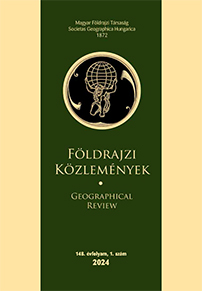CHALLENGES OF SPATIAL PLANNING OF THE SAND RIDGE IN THE DANUBE-TISZA INTERFLUVE
Abstract
In Hungary’s semi-arid zones of the sand ridge between the Danube and the Tisza rivers, the water balance has been consistently negative for several decades, coinciding with a complex array of economic and societal problems. Therefore, the climate-sensitive „Homokhátság region” requires heightened attention, thoughtful spatial planning, and rural development practices. Nevertheless, our research experiences indicate that substantial responses to the region’s challenges have not been effectively provided in recent decades. Deficiencies and anomalies in territorial planning have led to diminished local autonomy and the polarization of settlements. Attempts at sustainable environmental management, water retention, and climate adaptation have not yielded breakthroughs, and signs of socio-economic revitalization are primarily observable in major cities and their agglomerations. Previous developments have been overly focused on economic and agricultural aspects, treating individual sectors separately, thereby failing to provide comprehensive solutions to complex regional challenges. Most consulted experts argue that regional and state actors need a complete paradigm shift to achieve more balanced development initiatives that meet local needs. Regional collaborations alone are insufficient without more significant support and flexibility from central territorial policies. Therefore, we are convinced that in the Homokhátság region, there is an urgent need for geographically grounded,comprehensive approaches rooted in environmental, water, and climate protection considerations and wide-ranging, partnership-based interventions for territorial and rural development.
Copyright (c) 2024 András Donát Kovács, Jenő Zsolt Farkas, Gábor Vasárus , József Lennert

This work is licensed under a Creative Commons Attribution-NonCommercial-NoDerivatives 4.0 International License.



